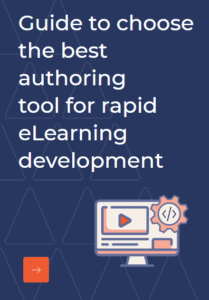Microlearning stands for learning that is targeted, focused, goal-oriented and much more. It can be used to prep the learners, build curiosity, to deliver the actual learning components directly, and also to reinforce learning- as refresher courses, and performance support.
Though it is called microlearning, content generation and instructional design still plays crucial role here, and bite-sizing is not a child’s play. We have already discussed the whats, whys, and pondered over the differences and factors that make it a must have.
The question is, what should we do to ensure that the microlearning we create is successful? Based on our experience (tried and tested) here are four elements that can pave the way towards success.
1. Interactive ~ Engagement
Give the learners something to do. Curiosity is one thing and activity is another, put the elements together and voila! the compound could be engagement. Quizzes, simulations, interactives or games, creating an interesting environment for learning and assessment both can help in strengthening the core of a microlearning course. Including some small game based elements is also another way to keep learner engaged.
2. Real Life Examples ~ Relativeness
Learners often lack interest as the learning often seems to be too obtuse to their needs. Microlearning is targeted and hence, one element that can really enhance it is the use of real life examples. Examples related to actual work and situations that can arise in day-to-day functioning often help in creating a connection, learners can relate it with their own roles and responsibilities and apply it in their tasks. If microlearning contains this element its functioning can be even more better.
3. Multidevice ~ Mobility ( Anytime Anywhere)
Microlearning courses are created to cater to the flexibility aspect, to allow learners to learn anywhere, anytime on the device of choice. So be it a presentation, quiz, video, or interactive the microlearning should be packaged to run smoothly on any device. Microlearning is often designed to be just in time learning and multidevice gives learners the freedom to learn when they want, so they kind of go hand-in-hand.
4. Lesson Plan ~ Strategy
Microlearning is often used as a part of a bigger learning strategy. Though it works well as reinforcement tool, it is also used at times to deliver particular topic. However, the element here is strategy. Microlearning is better used as a part of a bigger learning strategy than as an independent module. The former creates opportunity for holistic learning and microlearning are the best medium to be used to function different roles.
The modern learners are versatile, and constantly in lookout for things that stand out. Microlearning is a good medium to break the monotony. If designed and delivered correctly, it has the potential to engage the learners to a great extent and also, can be retained for longer. It even increases the chances of actually applying what has been learnt. Though there is no such proven formula on what will work and what will not work in eLearning but these elements can surely make it more effective and attractive for the learner.
So why wait? Try microlearning today. Post your queries to info@www.knowzies.com



